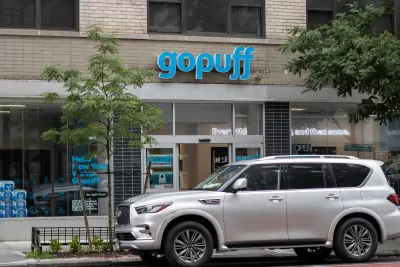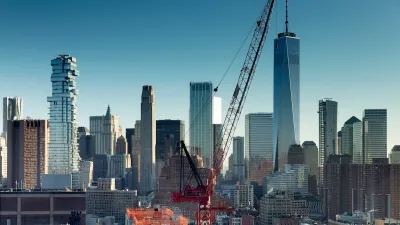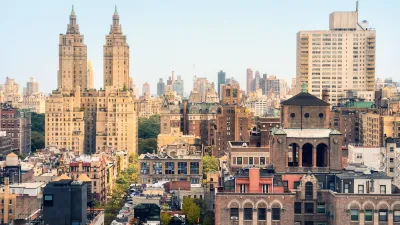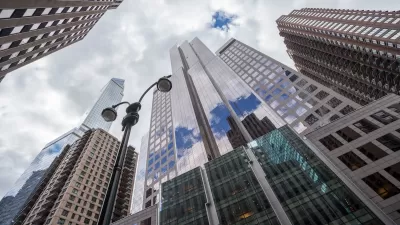Criticized as ‘dark stores,’ the warehouses for quick-delivery services have been popping up around the city.

The “rapid grocery delivery hubs” that have been appearing around New York City could be legalized under Mayor Adams’ zoning reform proposal, reports Nick Garber in Crain’s New York Business. Operated by businesses that promise ultra-fast grocery delivery, usually under 15 minutes, the hubs were criticized for operating as warehouses in what would otherwise be public-facing storefronts, not accepting cash payment, and threatening to take business from local bodegas.
“Since last year, the hubs have been governed by a bulletin issued by the Department of Buildings, which clarified that they could stay open in commercial districts rather than being relegated to industrial zones—so long as they stayed within a certain footprint, allowed the public to enter and kept their windows transparent.” The new zoning plan, dubbed the City of Yes for Economic Opportunity plan, would codify those rules citywide and add requirements such as clear windows in areas with high pedestrian traffic.
However, the entire issue could be moot, with many of the delivery companies already out of business. “Following the initial boom, the number of grocery delivery hubs has shrunk around the city, with multiple companies including Buyk, Jokr and Fridge No More shutting down their operations.”
According to Garber, “Other components of the administration’s Economic Opportunity plan would put casinos in line with the zoning code ahead of their expected approval in the city, allow small shops to open up in residential areas, and remove decades-old restrictions on dancing and live music.”
FULL STORY: Rapid grocery delivery hubs get green light to stay put under Adams' zoning plan

Trump Administration Could Effectively End Housing Voucher Program
Federal officials are eyeing major cuts to the Section 8 program that helps millions of low-income households pay rent.

Planetizen Federal Action Tracker
A weekly monitor of how Trump’s orders and actions are impacting planners and planning in America.

Ken Jennings Launches Transit Web Series
The Jeopardy champ wants you to ride public transit.

Crime Continues to Drop on Philly, San Francisco Transit Systems
SEPTA and BART both saw significant declines in violent crime in the first quarter of 2025.

How South LA Green Spaces Power Community Health and Hope
Green spaces like South L.A. Wetlands Park are helping South Los Angeles residents promote healthy lifestyles, build community, and advocate for improvements that reflect local needs in historically underserved neighborhoods.

Sacramento Plans ‘Quick-Build’ Road Safety Projects
The city wants to accelerate small-scale safety improvements that use low-cost equipment to make an impact at dangerous intersections.
Urban Design for Planners 1: Software Tools
This six-course series explores essential urban design concepts using open source software and equips planners with the tools they need to participate fully in the urban design process.
Planning for Universal Design
Learn the tools for implementing Universal Design in planning regulations.
Heyer Gruel & Associates PA
Ada County Highway District
Institute for Housing and Urban Development Studies (IHS)
City of Grandview
Harvard GSD Executive Education
Toledo-Lucas County Plan Commissions
Salt Lake City
NYU Wagner Graduate School of Public Service





























